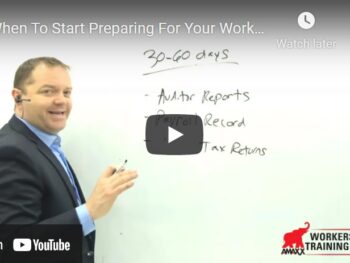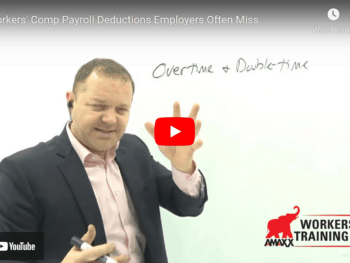
The best way to face a premium audit is head on. That means knowing what to expect and preparing ahead of time, along with avoiding the most common errors.
Click Link to Access Free PDF Download
“Workers’ Comp Claims Review Checklist: 9 Must-Have, Serious-Impact Elements”
The Audit
Insurance carriers conduct premium audits to verify a company’s payroll for the period during which it provided coverage. It occurs after the policy expires to determine the accuracy of the payrolls for that year to see if the premium must be adjusted. If the payroll exceeds the estimated projected payroll, the carrier will send a bill seeking more money. On the other hand, if the payroll is lower than projected, the employer may get money back.
Insurers conduct audits to ensure the premium paid to them accurately reflects the company’s risk. That includes making sure the business and employees are properly classified. It’s imperative to have the proper documents and information ready for the audit.
Here are common errors employers make — and how to avoid them.
- Failing to include deductions. Everything in the payroll is not necessarily subject to the workers’ compensation premium. The allowable exclusions vary among states, but several are universal to all jurisdictions, such as
- Overtime (premium portion, or the half part of time and half)
- Double time (premium portion, or the double part of double time)
- Severance pay
Severance pay for someone who has not worked at the organization incurs no risk and, therefore does not need to be included in the workers’ compensation premium calculation. Overtime and double time pay may be excluded — to a certain extent.
For example, if ‘Joe’ makes $10 per hour, but you give him overtime, or time-and-a-half for working weekends, the extra portion of his pay can be excluded. So, if Joe works 8 hours on Saturday at a rate of $15 per hour, the extra $5 per hour, or $40 (8 hours x $5 per hour) can be excluded. The same exclusion applies for double time.
Depending on the jurisdiction, additional deductions may apply.
- Officer excess
- Uniform allowances
- Tips/gratuities
- Employer-provided perks
- Bonuses
- Neglecting to inform the auditor. You will be charged for your $100,000 in overtime, double time and severance if you do not report them to the auditor!
- Omitting the necessary paperwork. Once you’ve informed the auditor of the deductions you’ve found, you need to back it up with the proper paperwork. For example, if a portion of your payroll went for severance pay, you will need the proper documentation. Other documents you may need to have at the ready include:
- Payroll records
- Payroll tax returns
- Certificates of insurance
- Invoices for contracts that show a breakdown of labor and materials
- Forgetting to consider state differences. In addition to the overtime, double time and severance pay exclusions, jurisdictions often have additional deductions. However, they are not the same in every state. A multi-state employer that assumes exclusions in one state apply to another may be sorely mistaken. You can check your state’s Basic Manual, ask your insurance broker, or ask your premium auditor to direct you to the allowable deductions for a particular jurisdiction.
- Improperly classifying employees. Your business operation determines what your ‘governing class’ will be; i.e., the classification code in which the bulk of your employees will fall. Employees such as clerical workers who incur little risk may fall into a different category, but only if they NEVER do other work. For example, if ‘Sally’ is an administrative assistant but once or twice a year she is involved with inventory control on the manufacturing floor, she cannot be classified in the clerical class.
- Failing to ask questions. If you’re not sure which classification applies to your company or you don’t know what paperwork is required to back up your deductions, ask. Resources are typically available through state insurance bureaus, NCCI, or your broker or insurer.
Conclusion
Premium audits don’t need to be a gut-wrenching ordeal. Document and prepare for the premium audit on an ongoing basis, so you don’t have to spend hours or days getting ready. Asking the right questions, understanding deductions that apply, and gathering the proper documentation will make the process smooth and painless.

Contact: mstack@reduceyourworkerscomp.com.
Workers’ Comp Roundup Blog: https://blog.reduceyourworkerscomp.com/
©2018 Amaxx LLC. All rights reserved under International Copyright Law.
Do not use this information without independent verification. All state laws vary. You should consult with your insurance broker, attorney, or qualified professional.













